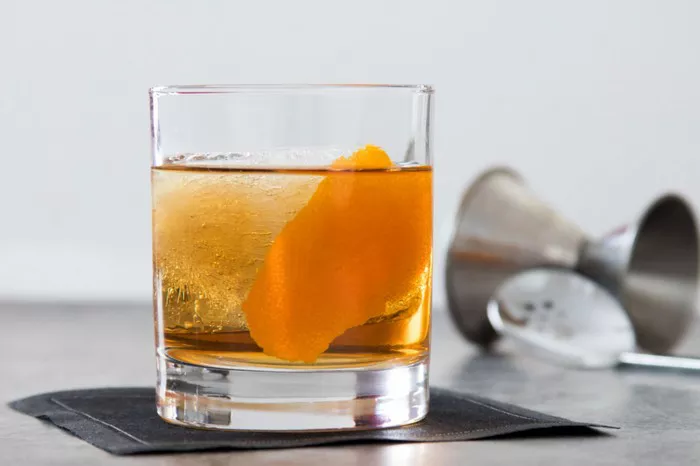Cocktails, the artful amalgamation of spirits, mixers, and garnishes, embody a diverse spectrum of flavors, textures, and experiences. Their classification is a nuanced and intricate subject, delving into historical roots, ingredient profiles, preparation methods, and cultural influences. Exploring how do you classify cocktails unveils a rich tapestry of categories that define these libations, catering to preferences, occasions, and tastes across the globe.
Historical Perspectives on Cocktail Classification
To understand how do you classify cocktails, one must embark on a historical journey through the evolution of these beverages. Cocktails have undergone a fascinating transformation since their inception, moving through distinct eras that shaped their classification.
The earliest classification of cocktails dates back to the early 19th century when they were broadly categorized as ‘cock-tail’ or ‘punch.’ ‘Cock-tail’ referred to a mix of spirits, sugar, water, and bitters, while ‘punch’ involved a combination of spirits, citrus, sugar, water, and spices or tea. This dichotomy laid the groundwork for future classifications.
As cocktails gained popularity, their diversity expanded, leading to the emergence of specific classifications based on their ingredients, such as ‘sours,’ ‘fizzes,’ ‘juleps,’ and ‘cobblers.’ These classifications were primarily defined by the dominant ingredient or preparation method.
Understanding Ingredients and Flavor Profiles in Cocktail Classification
The core elements of a cocktail, its ingredients, play a pivotal role in its classification. The interplay of spirits, mixers, modifiers, and garnishes creates a vast array of flavor profiles, leading to diverse classifications.
Spirits, the backbone of cocktails, can classify drinks into categories such as ‘gin-based,’ ‘whiskey-based,’ ‘rum-based,’ and ‘vodka-based.’ These classifications highlight the primary spirit used in the cocktail, shaping its character and taste.
Mixers and modifiers, including juices, syrups, liqueurs, and bitters, contribute significantly to cocktail classification. For instance, cocktails with citrus juices like lemon or lime often fall into the ‘sour’ category, while those incorporating cream or milk may belong to the ‘creamy’ classification.
Garnishes, though often overlooked, contribute to a cocktail’s classification by enhancing aroma, presentation, and taste. From citrus twists to olives and herbs, garnishes can signal the classification of a cocktail, such as ‘herbal,’ ‘fruity,’ or ‘savory.’
The Influence of Preparation Techniques on Cocktail Classification
Beyond ingredients, the method of preparation plays a crucial role in classifying cocktails. The techniques employed in mixing, shaking, stirring, and layering contribute to distinct classifications, impacting the drink’s texture, temperature, and overall experience.
Cocktails prepared by stirring typically fall into the ‘stirred’ category, characterized by a silky texture and clarity. On the other hand, cocktails shaken vigorously with ice belong to the ‘shaken’ classification, often resulting in a frothy, aerated texture.
Layering techniques, where ingredients with varying densities are carefully poured to create visible layers, classify cocktails as ‘layered’ or ‘floats.’ These drinks showcase a visually striking presentation, adding a layer of complexity to their classification.
Cultural and Geographical Influences in Cocktail Classification
The classification of cocktails is not only influenced by ingredients and preparation methods but also by cultural and geographical factors. Cocktails have traversed borders, adapting to regional preferences and traditions, resulting in distinct classifications worldwide.
For example, Latin American countries have contributed to the ‘tiki’ classification with their tropical, rum-based concoctions featuring exotic fruits and elaborate garnishes. Meanwhile, European countries have a rich heritage in classic cocktails like the ‘Martini’ or ‘Negroni,’ emphasizing sophistication and balance.
Furthermore, cultural celebrations and events often lead to the classification of seasonal or themed cocktails. Drinks classified as ‘holiday cocktails’ or ‘summer coolers’ cater to specific times of the year, incorporating seasonal ingredients and flavors, showcasing the fusion of culture and classification.
Modern Trends and Innovative Classifications in Cocktails
In recent years, the cocktail landscape has witnessed a surge in innovative techniques, ingredients, and presentations, leading to new classifications that challenge traditional norms.
Craft cocktails, a movement emphasizing artisanal ingredients and bespoke recipes, have given rise to classifications like ‘bespoke cocktails,’ ‘farm-to-glass cocktails,’ or ‘molecular mixology.’ These classifications focus on unique ingredients, experimental techniques, and personalized experiences.
Additionally, the emergence of low-alcohol or non-alcoholic cocktails has introduced classifications like ‘mocktails’ or ‘zero-proof cocktails.’ These beverages cater to health-conscious consumers or individuals seeking flavorful alternatives without the effects of alcohol.
Conclusion
The classification of cocktails is a multifaceted subject that encompasses historical roots, ingredient profiles, preparation techniques, cultural influences, and modern trends. Understanding how do you classify cocktails unveils a diverse spectrum of categories that encapsulate the essence and complexity of these libations.
From historical beginnings that categorized cocktails based on simple distinctions to modern innovations pushing the boundaries of ingredients and techniques, the classification of cocktails continues to evolve, reflecting the ever-changing preferences and tastes of enthusiasts worldwide. Embracing this diversity in classification allows for a deeper appreciation of the artistry and craftsmanship behind each cocktail, enriching the experience for both creators and imbibers alike.


